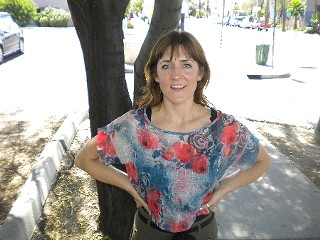While it is still summer, now is one of the best times to think about planting trees. "Rain is the best possible water source for any plant," says Trees for Tucson program coordinator Rani Olson. The Tucson Clean and Beautiful program, through a Tucson Electric Power grant, provides trees to Tucson area homeowners for $8 each, as long as the homeowners are TEP customers and agree to plant their trees on the east, west or south side of their homes. The trees are delivered straight to your door. For information or to download an application, visit www.treesfortucson.org.
How did the program begin?
Tucson Clean and Beautiful started 26 years ago as a cleanup initiative for trash around the city, and Trees for Tucson started shortly after that. In terms of blowing up as part of a larger program, that didn't happen until TEP partnered with Trees for Tucson, and then we were able to expand in much larger areas and with many more trees. Right now, we're just shy of 5,000 trees per year as far as being an annual tree-supplier for the Tucson area.
Where did the idea come from?
The idea was brought to TEP by our executive director, and the (Arizona) Corporation Commission is actually the one behind those decisions. It is something that TEP is more or less obligated to participate in as a utility. There are few utility partnerships with an urban-forestry program in the country. We get phone calls from different people interested in building an urban-forestry program off the Trees for Tucson model.
What's unique about the model?
The partnership. The utility not only supports it financially, but also understands the larger picture of reducing utility costs and having a positive impact. A tree is considered a passive solar technique, as opposed to solar panels. There are multiple benefits. Trees improve the air quality and improve the soil. There are many benefits from planting that one tree.
How does the program work?
Most of the day, I work with people—individuals, homeowners or renters; we also get a lot of (homeowner associations), or apartment complexes, or multiple establishments, like rentals or a four-plex or duplex. We do get a lot of residential calls ... and then there are Trees for Schools and Trees for the Community, which deal with schools and larger groups of people who are trying to either educate people about trees or have a positive impact on the larger community.
How does the application process work?
To qualify for the Home Shade Tree Program, first you must be a TEP customer. That's how we get reimbursed. You also have to plant around the home to shade the home. (Participants) can quality for our program every calendar year.
Why do you think the program has had success?
Nobody experiences this city as a shaded and cool environment. We don't have a water source; we don't have a lot of large shade trees. There's already knowledge of the need for cooler areas, and for beautification and improving our environment. A lot of the attraction of moving here is the natural beauty of the desert. I think the tree program is supporting a general consensus, and Tucson is supporting the program; it didn't just develop out of nowhere. Part of the way it runs has a lot to do with education. We are answering the phone all day with people calling with really complex questions on the root systems and different varieties planted together, and really simple questions from people who just moved to Tucson and have never planted a tree and don't know how to properly water a tree.
What kind of trees do you offer?
We do all desert-adapted trees. The majority is native trees, and that's not always appropriate in every circumstance, but the majority of people in Tucson planting trees are planting native trees. They are low-water-use, and can tolerate our hot summers and apparently tolerate our freezes. (During) this past winter freeze, we lost a lot as a community, and we learned that the Australian adaptive trees don't survive the kind of freeze we experience. It was kind of a fluke. These (Australian trees) are trees identified the last 20 years as good adaptive trees. They are evergreen, low-water-use and have a lot of qualities ... but the freeze just clobbered them. ... Once again, our native trees survived. Having this recent freeze helped us understand ... the importance of having an awareness of planting native trees. These plants have been here longer then we've been here. We're not always all-knowing.





